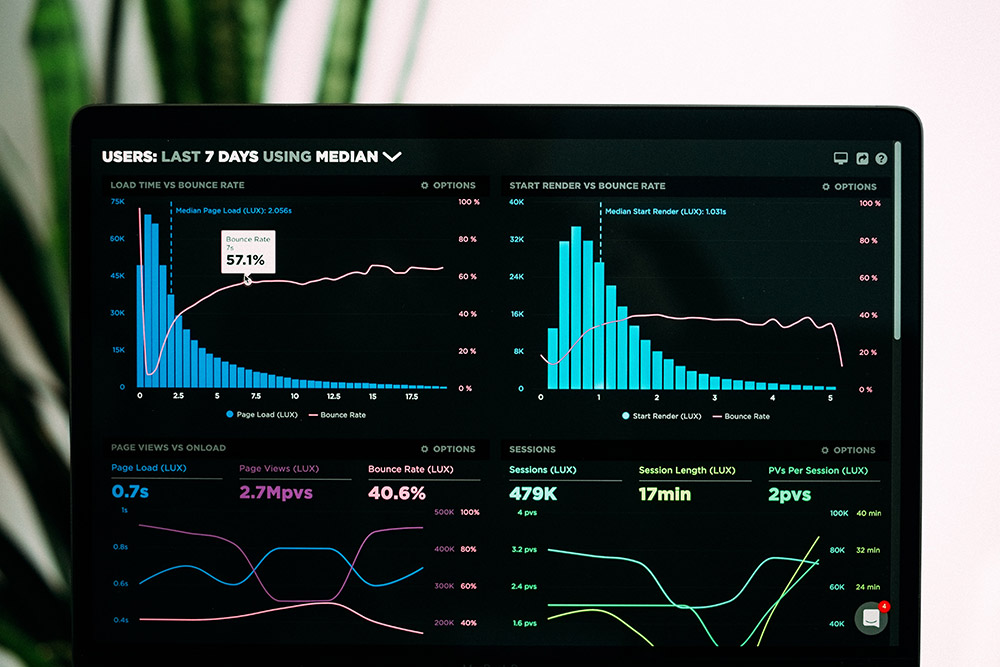How To Set Yourself Apart From The Competition: Your Guide To Competitor Analysis (Part 2)

If you got here from our first article which you can find here, then welcome back, ladies and gents.
If you just popped in here, we’d recommend you give that first bit a little study first as we are looking at how you go about conducting competition analysis today. The preamble to this article was what competition analysis is.
So, without further ado, let’s do further!
Competitor Analysis, How To?
Competitor analysis is meant to provide you with information to help you make product development and marketing decisions.
Complete the next nine steps to unearth those "hidden-in-plain-sight" information nuggets.
Determine Your Competition
To conquer a mountain, you must first determine which mountain you want to climb.
Hiking up a hill with well-marked trails isn't the same as climbing Kilimanjaro. You'll need several forms of preparation, equipment, and assistance.
To determine the difficulty of your "climb," you must examine three sorts of competitors:
An online business that provides similar products to the same target market (both geographically and demographically) at a similar price point is considered direct competition.
Let’s go with the following example - Apple vs Huawei.
The first competitor to consider for your brand is direct competition. Why? Because doing so serves two purposes:
1. Analyse the product's viability
If someone else sells it, this type of item is likely to be in high demand.
2. Look at potential hurdles
The hurdle for entering a market is set by direct competition. If a competitor's product costs $10, you won't be able to charge $25 for it unless you add another twist.

Here's how to tell what direct competition you’re up against:
-
Examine search engine results pages (SERPs) for related product inquiries.
-
Examine market share data from Statista or a similar source.
-
Check to see who is buying products from the same suppliers/wholesalers that you intend to use.
-
Take note of the brands that your potential buyers use or mention the most in interviews.
Direct competitors are easier to spot, while indirect competitors can be overlooked.
An example of indirect competition is an online merchant who offers products that differ in some aspects yet may satisfy the same client's desire.
Indirect competition research, on the other hand, may be of interest to more established ecommerce firms exploring new product concepts and/or new markets.
For example, if a skincare company wants to launch a new CBD product line, it should look at what other CBD companies are doing to determine which intangible assets they may use to compete with them.

Finally, there is replacement competition – a company that has the potential to replace your product with something entirely different. By providing a better product or service, such "disruptive" brands attempt to eat into the earnings of more established competitors. Here are a few instances you'll recognise - Grab took over taxi services and Couchsurfing eroded the hotel market.
Choosing the "replacement" path might be difficult, especially if you are up against the larger competition. You also run the danger of investing in a product that no one else wants if you don't validate its viability.
The higher risks, however, are countered by bigger profits. Bumping a huge competitor, particularly one with a monopoly on the market, might result in rapid growth for your own company.

Conduct A SWOT Analysis Of Your Competitors
This is an excellent tool for visualising how your company compares to others. Once you've identified a few direct competitors, examine their operations in terms of Strengths, Weaknesses, Opportunities, and Threats. Your analysis should include the following components:
-
Positioning of a brand
-
Website for online shopping
-
Customer satisfaction
-
Strategy for sales, pricing, marketing, content, shipping & discounts/promotions
Ask the following questions to acquire answers for each section:
✧ What areas does this brand excel in?
✧ Can you think of any intangible assets that offer them an advantage?
✧ Which procedures or experiences need to be improved?
✧ What areas do they overlook or overlook?
✧ Based on your resources, what can your firm do better?
✧ Can you be replaced by this competitor?
✧ Can they beat you?

Compare your competitors' vulnerabilities to your own. Take note of the opportunities they are passing up. Is there any way you could profit from them?
On the contrary, knowing your strengths and weaknesses can help you better assess the overall market circumstances and entrance barrier – and prepare you to overcome them.
Examine The Websites And Consumer Experiences Of Your Competitors
Customer experience is a critical component of ecommerce. Consider competitor research as an opportunity to fill gaps in your ecommerce website design plan.
To successfully examine your competitors' UX and CX, use Erin Sanders' 5-step UX research framework from the Research Learning Spiral:
Determine Your Goals
What information do I need to acquire? At the most fundamental level, you should examine the competitor's navigation, product catalogue, product listing, checkout experience, shipping policy, and on-site marketing tools (such as discounts, coupons, upsells, etc).
Construct Research Hypotheses
Create a set of assumptions about their customers based on your prior knowledge of the competitor's strengths and limitations. For example, does a competitor's content influence a shopper's decision to purchase a product?

Choose Your Research Approaches Carefully
These will be determined by your available resources. For analysing their UX/CX, employ both quantitative (benchmarks, user testing data, performance indicators, etc.) and qualitative methods (surveys, focus group interviews, customer reviews, etc).
Evaluation
Collect as much information as you can within the time constraints of your investigation.
Compile The Findings
Fill in the knowledge gaps, question or validate your theories, and evaluate alternative design opportunities with the information you've gathered.
Determine The Market Positioning Of Your Competition
Your primary "differentiator" from competitors is your competitive posture. This information is easily discovered when evaluating indirect competition – their solution will be slightly different from yours.
That distinction represents their distinct value proposition, which draws new clients. Every brand requires one if they want to be successful.

Perform the following steps to map the market position of competitor brands:
-
Determine the major category of client needs that you intend to meet.
-
Choose a geographic region to research.
-
Determine whether you want to monitor the entire market for a product or just a specific segment.
-
Choose a price range to study (cheap/low-end products, mid-market, luxury).
-
Determine the major benefit that the customer receives at each pricing point.
-
On the map, arrange rivals according to the product price and amount of major benefit.
Examine The Pricing And Current Offers Of Your Competition
Perceptual mapping can assist you to figure out how your competitors price their items and where you might fit in. This information provides some basic estimates of how much consumers are willing to pay for various categories of commodities (from different brands).
However, it is not only objective variables like quality or feature range that influence consumers' price sensitivity.

As an example, 43% of all consumers are willing to pay more for increased convenience, such as speedier shipping or hassle-free delivery & 71% are willing to pay a premium for brands that give complete product traceability.
Pay attention to such "add-ons" while you compare pricing with competitors. Determine how they add value to their prices to avoid competing solely on price.
Learn About The Technology Used By Your Competition
Technology may appear to be a tangible asset that any brand may obtain. However, we frequently forget that technology is a facilitator, therefore it is less about the technology and more about how it is used.
Competing businesses can use the same ecommerce platform but modify and extend it to provide a distinct brand experience (intangible asset).
As a result, when doing your analysis, keep the following in mind:
-
What kind of ecommerce system does the business utilise – open source, S.A.A.S, or headless commerce?
-
Do they use any custom extensions or plugins?
-
What kinds of support systems do they employ, such as payment processors, email marketing service providers, 3PL connectors, and so on?

-
Are they utilising any cutting-edge technologies, such as artificial intelligence, chatbots, augmented reality, or virtual reality, to provide an immersive shopping experience?
-
Is it possible to provide a better online purchasing experience by using a different technological stack or developing custom integrations?
Make Sure Your Delivery Rates Are Competitive
Shipping is a major purchasing motivator for the majority of consumers; according to the Baymard Institute, shipping charges are one of the leading causes of cart abandonment.
Understand what your competitors are charging for:
✧ Same-day or next-day delivery.
✧ Shipping takes two days.
✧ Shipping is free.
✧ Shipping internationally.
Then, compare alternative logistics suppliers to see if you can offer comparable costs. Typically, ecommerce firms can negotiate bulk delivery reductions and long-term contracts.
Alternatively, you might raise the pricing to offset some of the costs of shopping for bigger things.
Finally, if you have a physical location, consider BOPIS or curbside pickups. Both can assist in lowering fulfilment costs.

Examine The Reviews And Performance On Social Media
Social media platforms are a goldmine for the voice of the customer (VOC) data that can be used for product development and brand positioning.
Here's how to use social media to conduct a competitive analysis:
-
Check out the most recent reviews. These may aid in identifying flaws that need to be addressed.
-
Use the Pages to Watch feature to keep track of how related pages interact with their respective audiences.
-
In the Graph Search box, type "pages liked by people who like [your page name]" to see what other brands your fans enjoy.
-
Popular brands with a cult following have subreddits dedicated to street interactions with their fans. Examine these to have a deeper understanding of the audience's preferences, wants, and lost opportunities.
-
General subreddits (for example, those addressing skincare or gaming) also feature lively and brutally honest conversations about various products. Look for these threads to learn what motivates the competitor's customers and influences their purchasing decisions.
-
Examine the aesthetics and content calendar of your competitors. What kinds of visuals do they employ?
-
Are they making use of new Instagram capabilities like Reels or Shoppable posts?
-
Calculate their engagement levels for each post. Is it genuine? What is their like-to-comment ratio?
-
Are they collaborating with influencers? Who are they collaborating with? Why?
-
Examine how the company handles support questions.
-
Examine how they respond to product enquiries.
-
Examine mentions and hashtags to get a sense of the general conversation.

Keep Tabs On Your Competitors
Use the following competitive analysis frameworks to keep your competition research organised and easy to revisit in the future:
-
The five forces model of Porter.
-
Framework for Resource-Based Viewing (RBV)
-
SWOT analysis template
-
Template for perceptual mapping
In addition, to ensure that your competitive intelligence is continually up to date, you should monitor their:
Social Media
Use the Pages to Watch function or add them to your social media analytics programme.
Results From Search Engines (SERPs)
Tools like Ahrefs and Semrush are excellent for determining which keywords your competitors rank for and how they obtain backlinks to their websites.
Coverage On The Internet
You can establish Google alerts for their brand name to understand when and in what context they are cited by the media/influencers.
Sources And Volume Of Traffic
SimilarWeb offers free website traffic metrics as well as an overview of the most common referrals.
Closing Words
It is critical to keep abreast of market competitiveness. When doing a competition study, brands must include the primary components that we have established. Brands should establish a ranking/scoring system for each of these components to acquire actionable insights.

The indications for each component, as well as the scope of the study, must be consistent (brands and retailers monitored). Furthermore, the research should be performed frequently to stay current with the general market condition and swiftly discover new possibilities along the route.
More articles please read Promotional Strategies: 100% Beginner's Guide For Small Businesses

